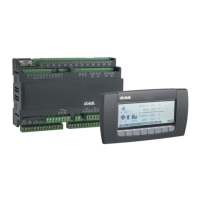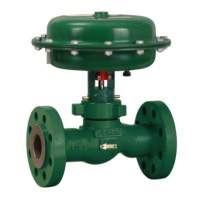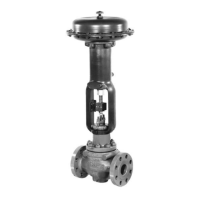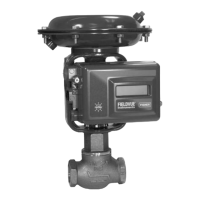37
Safety Manual
00809-0200-5100, Rev GB
Installation and Configuration
February 2017
Installation and Configuration
3. In the Change Safety Alarm Parameters window click the Apply button.
4. Check the SIL Surface Distance to verify that the 5900 has detected the product surface:
In LPG tanks, a verification pin is mounted in the still-pipe in order to allow verification
of level measurements in a pressurized tank. At this stage of the Safety Alarm Setup you
should temporarily filter out the verification pin in order to let the 5900 detect the
product surface.
The same principle is applicable in case a Reference Reflector for proof testing is
installed in the tank. Just as the LPG verification pin, the reference reflector may need to
be temporarily filtered out to ensure that the 5900 tracks the product surface. See
“How to filter out LPG Verification Pin or Reference Reflector” on page 43 for more
information.
5. If the SIL Surface Distance deviates significantly from the distance to the actual product
surface, the gauge has probably locked on a disturbing object. Then you will have to
filter out the disturbing echo by adjusting the SIL Amplitude Threshold to ensure that the
5900 can detect the product surface as described in “How to adjust the SIL Amplitude
Threshold” on page 44.
SIL Amplitude Threshold
(Near Zone)
(1)
Start by setting this parameter equal to zero. It is used for advanced configuration and normally
there is no need to change this value. However, it may be useful in special applications such as
Dry-run, or in tanks with weak product surface echoes near the tank bottom. For Dry-run you
may use the SIL Amplitude Threshold (Near Zone) to increase the margin to Near Zone noise in
the upper part of the tank. For tanks with weak bottom echoes, you may reduce the amplitude
threshold close to the tank bottom without affecting threshold settings in the rest of the tank.
SIL Ref. Refl./LPG Pin
Distance
Distance from SIL Reference Point to a LPG verification pin in a Still Pipe or a Proof Test
Reference Reflector.
Start by setting this parameter equal to zero. It will be adjusted at a later stage if a 5900 with
LPG/LNG Antenna or Reference Reflector is installed.
SIL Ref. Refl./LPG Pin
Amplitude
This is an amplitude threshold that is used to mask the LPG verification pin when a 5900 with
LPG Antenna is used. It can also be used to mask a Reference Reflector for antennas that
support it. Start by setting this parameter equal to zero. It will be adjusted at a later stage of the
configuration procedure if a 5900 with LPG/LNG Antenna or Reference Reflector is installed.
SIL Radar Sweep Mode Set to ETSI or FCC according to country/region and antenna. ETSI is the standard choice for
most countries. Use FCC in the USA and for antenna type LPG.
Verify that correct SIL Radar Sweep Mode is used. You can, for example, check the model code
and ensure that Level Measurement Method complies with SIL Radar Sweep Mode.
SIL Radar Sweep Mode
No.
Verify the Sweep Mode No.:
0= ETSI
2=FCC
SIL Minimum Alarm Time Set according to the requirements imposed by the safety PLC.
(1) Contact Emerson Process Management / Rosemount Tank Gauging in case you need information on how to use this function.
Safety Alarm
Parameter
Description (continued)
SIL Block Update
symbol indicates that
TankMaster reads data
from the 5900
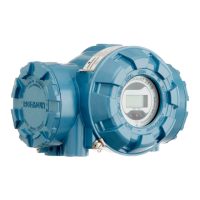
